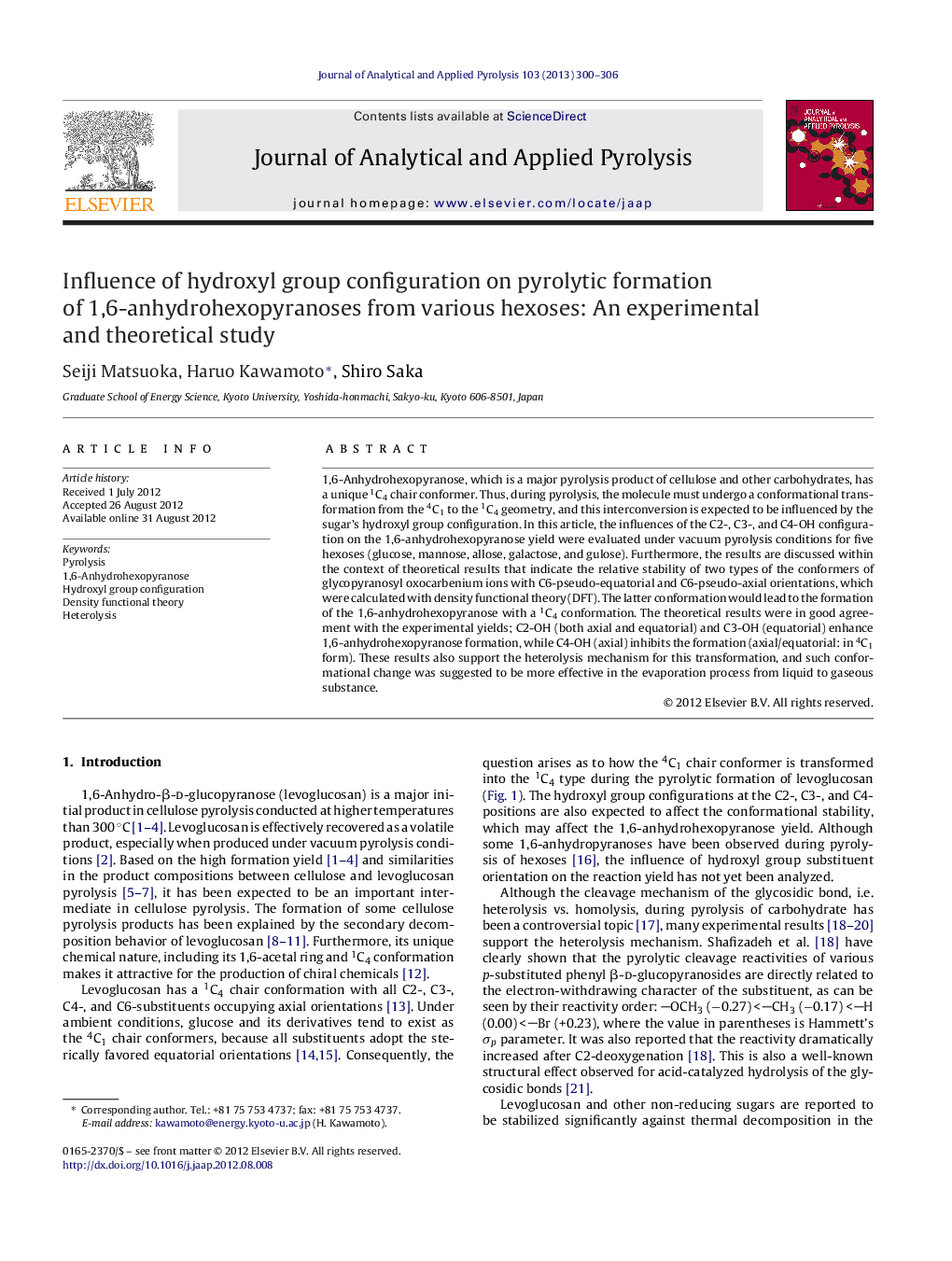| Article ID | Journal | Published Year | Pages | File Type |
|---|---|---|---|---|
| 1197201 | Journal of Analytical and Applied Pyrolysis | 2013 | 7 Pages |
1,6-Anhydrohexopyranose, which is a major pyrolysis product of cellulose and other carbohydrates, has a unique 1C4 chair conformer. Thus, during pyrolysis, the molecule must undergo a conformational transformation from the 4C1 to the 1C4 geometry, and this interconversion is expected to be influenced by the sugar's hydroxyl group configuration. In this article, the influences of the C2-, C3-, and C4-OH configuration on the 1,6-anhydrohexopyranose yield were evaluated under vacuum pyrolysis conditions for five hexoses (glucose, mannose, allose, galactose, and gulose). Furthermore, the results are discussed within the context of theoretical results that indicate the relative stability of two types of the conformers of glycopyranosyl oxocarbenium ions with C6-pseudo-equatorial and C6-pseudo-axial orientations, which were calculated with density functional theory (DFT). The latter conformation would lead to the formation of the 1,6-anhydrohexopyranose with a 1C4 conformation. The theoretical results were in good agreement with the experimental yields; C2-OH (both axial and equatorial) and C3-OH (equatorial) enhance 1,6-anhydrohexopyranose formation, while C4-OH (axial) inhibits the formation (axial/equatorial: in 4C1 form). These results also support the heterolysis mechanism for this transformation, and such conformational change was suggested to be more effective in the evaporation process from liquid to gaseous substance.
► Conformational change became favorable by assuming oxocarbenium ion. ► The 1,6-anydrohexopyranose yields varied: Glc, Man > All > Gal, Gul. ► The influences of C2C4 OH configurations on the ion stability explained the yields. ► A heterolysis mechanism occurring between liquid- and gas-phases was proposed.
